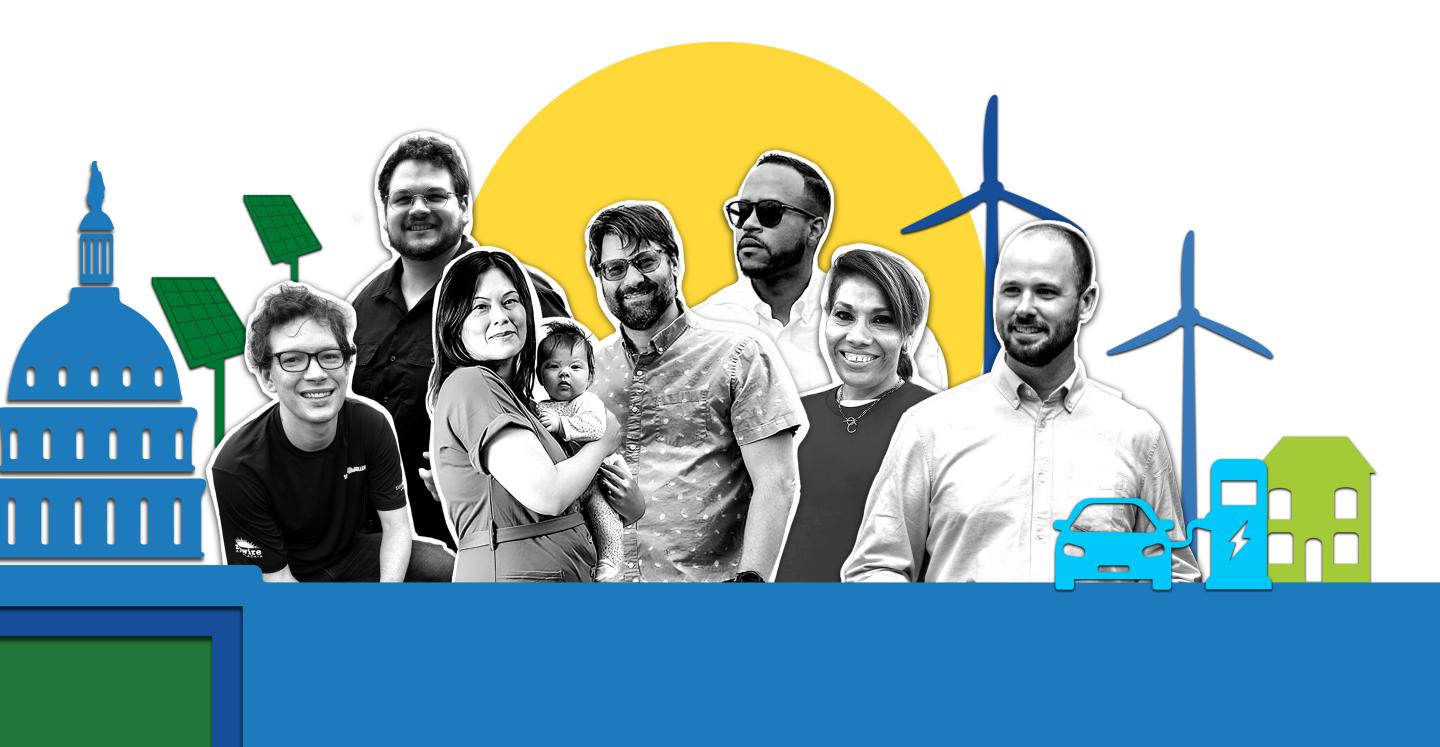
The US passed two huge climate laws in the past four years, and they’re already changing lives
The U.S. recently passed two of the most ambitious environmental laws in the nation’s history, although you won’t find the word “environment” in either of their official names.
The Bipartisan Infrastructure Law, finalized under the Biden-Harris administration in 2021, and the Inflation Reduction Act of 2022 are supporting clean energy, clean vehicles and more, cutting pollution, saving people money and creating jobs.
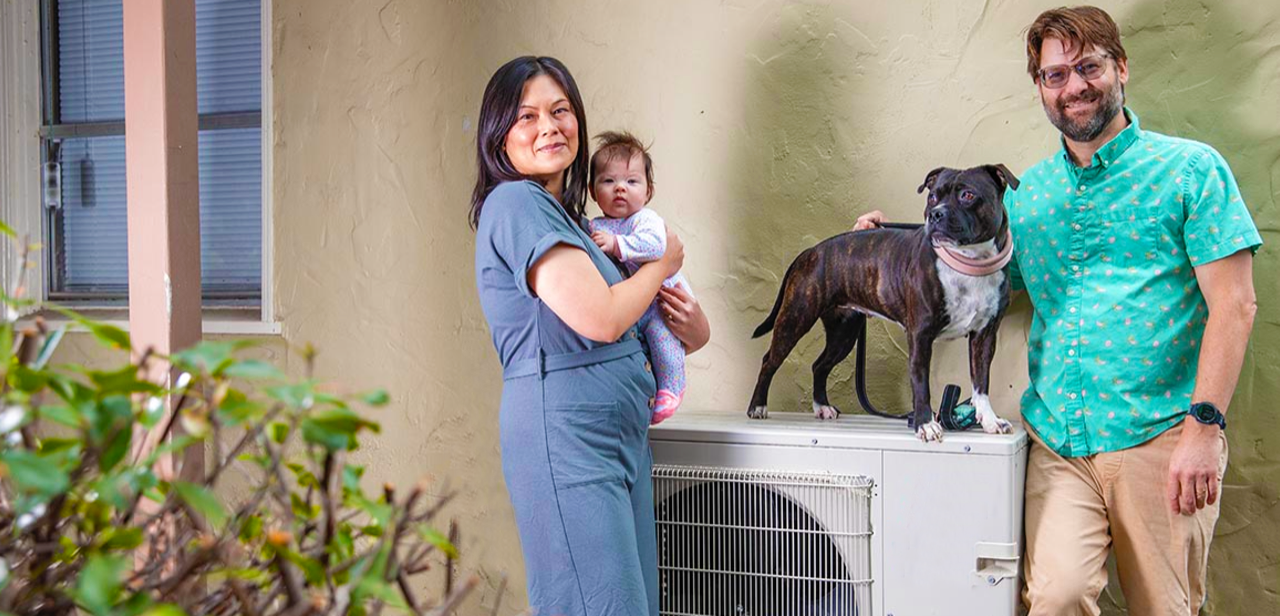
Meet people around the country who are seeing — and sharing — the benefits of strong climate action:
Clean buses for kids: Carmen Cortez, electric school bus driver
Sealing leaky oil wells: Tyler Duhon, construction manager
Saving big by going green: Randy Grow, homeowner
Buying his dream car: Corbin Wyatt, electric vehicle convert
New jobs for coal country: Dan Conant, solar entrepreneur
Low rents, solar power: Brendan Mitchell, affordable housing director
Clean buses for kids
With $5 billion in funding from the Bipartisan Infrastructure Law, the EPA is rolling out a cleaner, safer ride to school for millions of kids across the country. To date, the program has funded approximately 8,500 school bus replacements at more than 1,200 schools. This spring, the EPA announced an additional almost $1 billion in grants under the Inflation Reduction Act to replace heavy-duty vehicles, including school buses, with zero-emission alternatives.
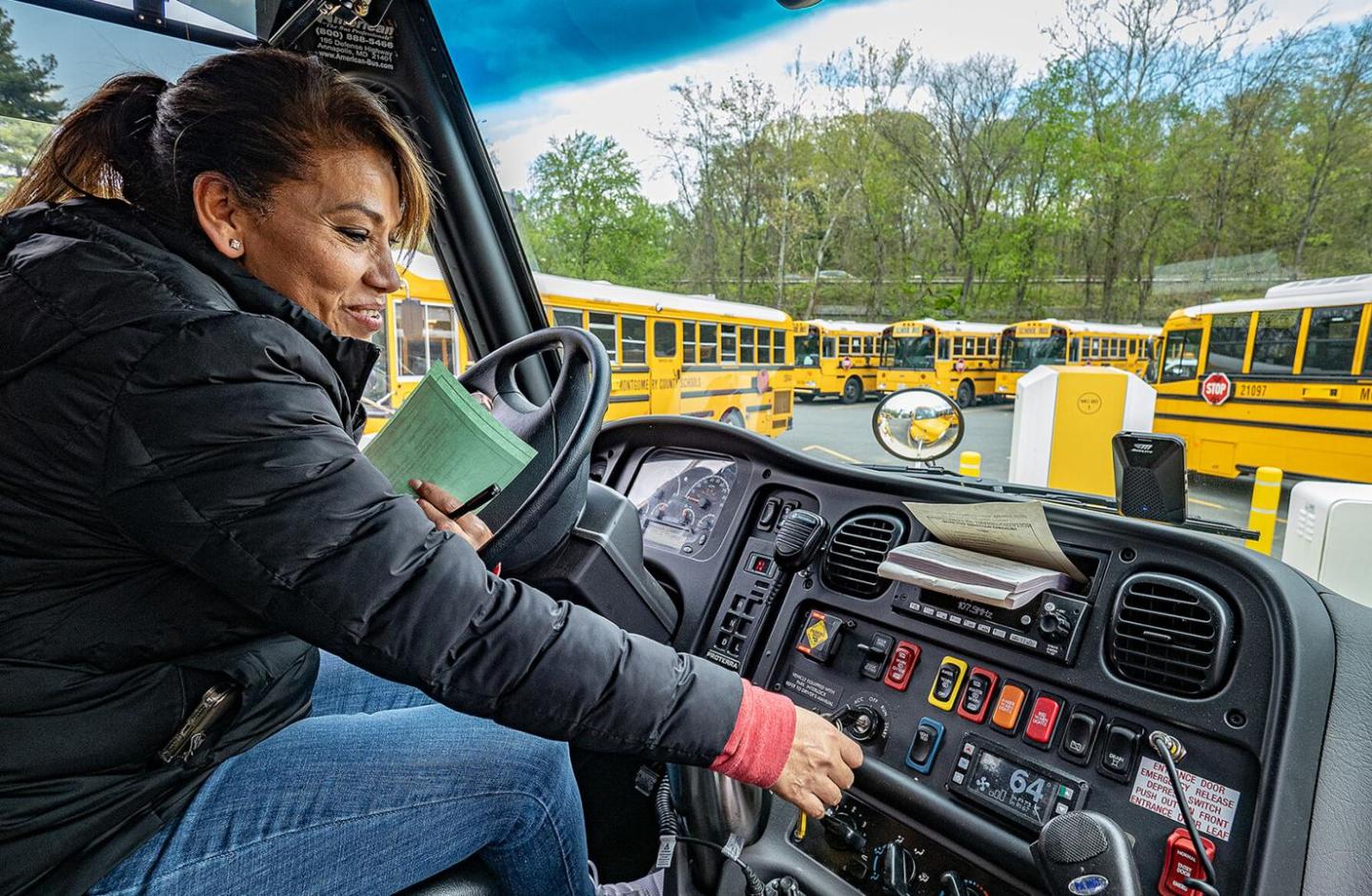
When Carmen Cortez, a school bus driver for Montgomery County Public Schools in Maryland, heard she’d soon be driving an electric bus, she admits she had doubts.
“I did not know what to expect,” she explains. “But the day I drove the vehicle I could feel how quiet it was, and the most important thing is that I was able to breathe cleaner air. This change was also felt by the students and the neighbors who live on the routes I travel.”
Today, Cortez trains other electric bus drivers in her district. Traditional diesel-powered buses release climate pollution alongside dangerous air pollution that exacerbate childhood asthma and other diseases.
“My community and low-income communities are the ones who face the impact of daily pollution,” Cortez says. “I hope all schools in all states can have access to electric buses.”
Sealing leaky oil wells
More than 120,000 “orphan” oil and gas wells, with no responsible owner, have been documented across the U.S. Left unsealed, these abandoned wells can leak oil and toxic chemicals and emit methane, a powerful greenhouse gas. Experts estimate there are likely a million more orphan wells not on the books.
Thanks to $4.7 billion in funding from the Bipartisan Infrastructure Law, a nationwide campaign to plug them is underway.
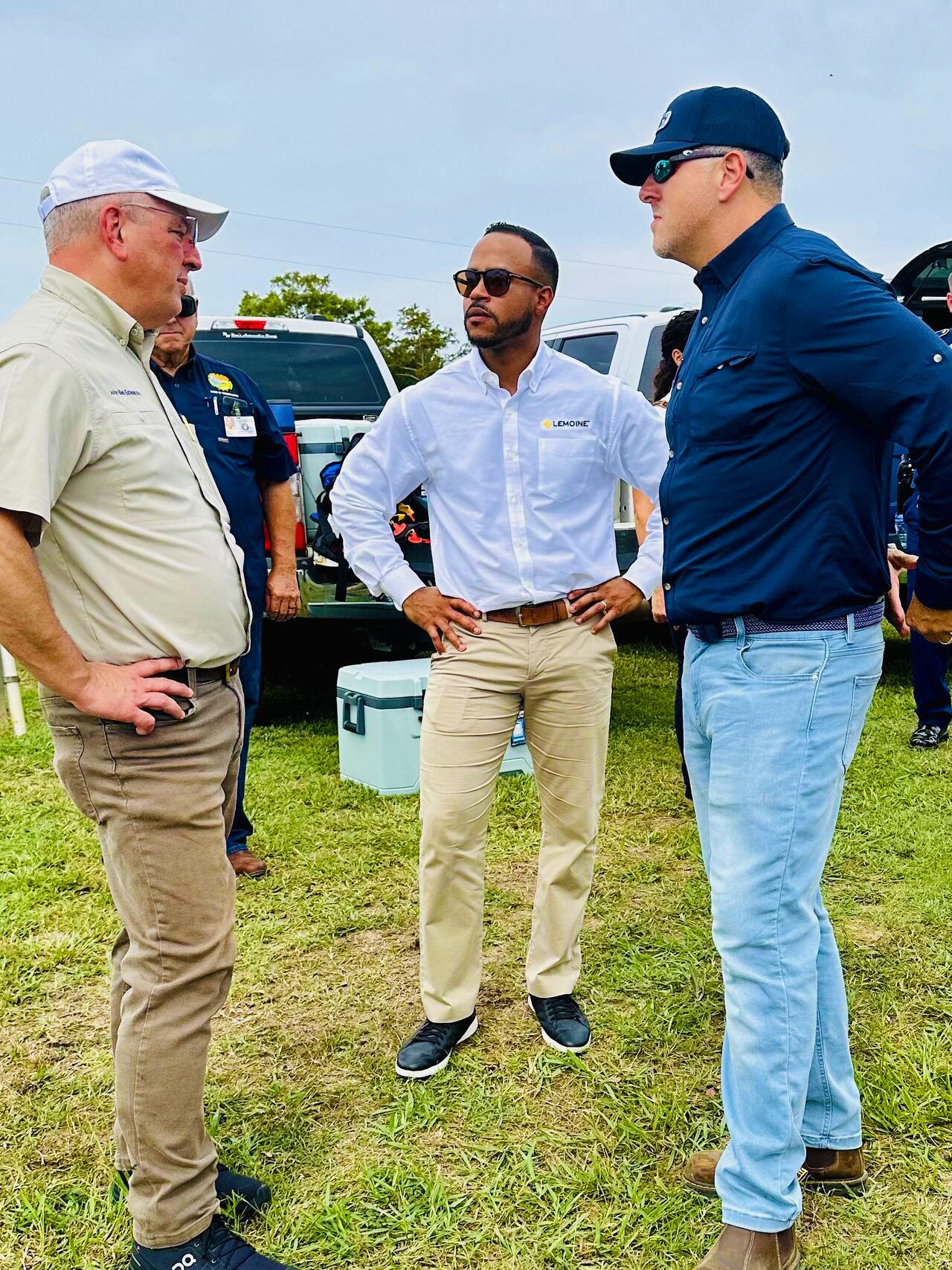
Tyler Duhon, an operations manager for construction company Lemoine, has been leading work to plug orphan wells around Oil City, Louisiana, where the oil flow never quite met expectations. Rusting wellheads dot the landscape. “It's like a graveyard that’s been sucked dry,” says Duhon.
In 2023, Lemoine plugged 370 wells, on ranches, in yards, even in the back of an auto parts store. “When you get that equipment out, you reduce the environmental impacts, and you’re making people’s lives better,” says Duhon. Across the country, 14 million people live within a mile of a documented orphan well. BIL funding has plugged some 7,000 wells in two dozen states to date.
The work has also brought new economic opportunities into communities that have seen few after the oil and gas dried up. In Louisiana, in addition to hiring experienced contractors, Lemoine and Duhon worked with the Louisiana Chamber of Commerce Foundation to ensure that local, minority-owned businesses, typically at the outskirts of the industry, would receive onsite training. “This is a hard market to get into,” Duhon explains. “Seeing those funds go towards smaller businesses, helping them thrive and branch out …This is a life-changing opportunity.”
With the next round of state funds expected in 2024, Duhon’s goal is to create the community’s first homegrown well-plugging business.
Saving big by going green
Randy Grow had a deadline. With a baby on the way, he wanted to get his California home off of fossil fuels by 2024.

“Everything in our home ran on gas,” he says. Bringing a new child into the world amid a climate crisis motivated him to change that.
So he and his wife, Debbie, got to work. They installed solar panels and replaced both their stove and clothes dryer with electric models. They also replaced their gas-powered furnace with a heat pump, which both heats and cools their home, and installed a new water heater.
Thanks to the Inflation Reduction Act and other incentives, the couple were able to claim nearly $13,000 in tax credits. “It was very easy to use the credits,” Grow says.
In addition to the federal tax credits that the family took advantage of, the IRA is funding rebates worth $8.5 billion for low- and middle-income families who make energy efficient-home upgrades. Those are rolling out over the rest of 2024 and into 2025.
Today, the family is happy with the changes. “Everything works just as well,” Grow says. And there’s another benefit: Their utility bills are near zero. A nice savings for the new family of three.
Buying his dream car
Oklahoma City cafe owner Corbin Wyatt is just one of hundreds of thousands of drivers benefiting from an electric vehicle boom driven by the Inflation Reduction Act.
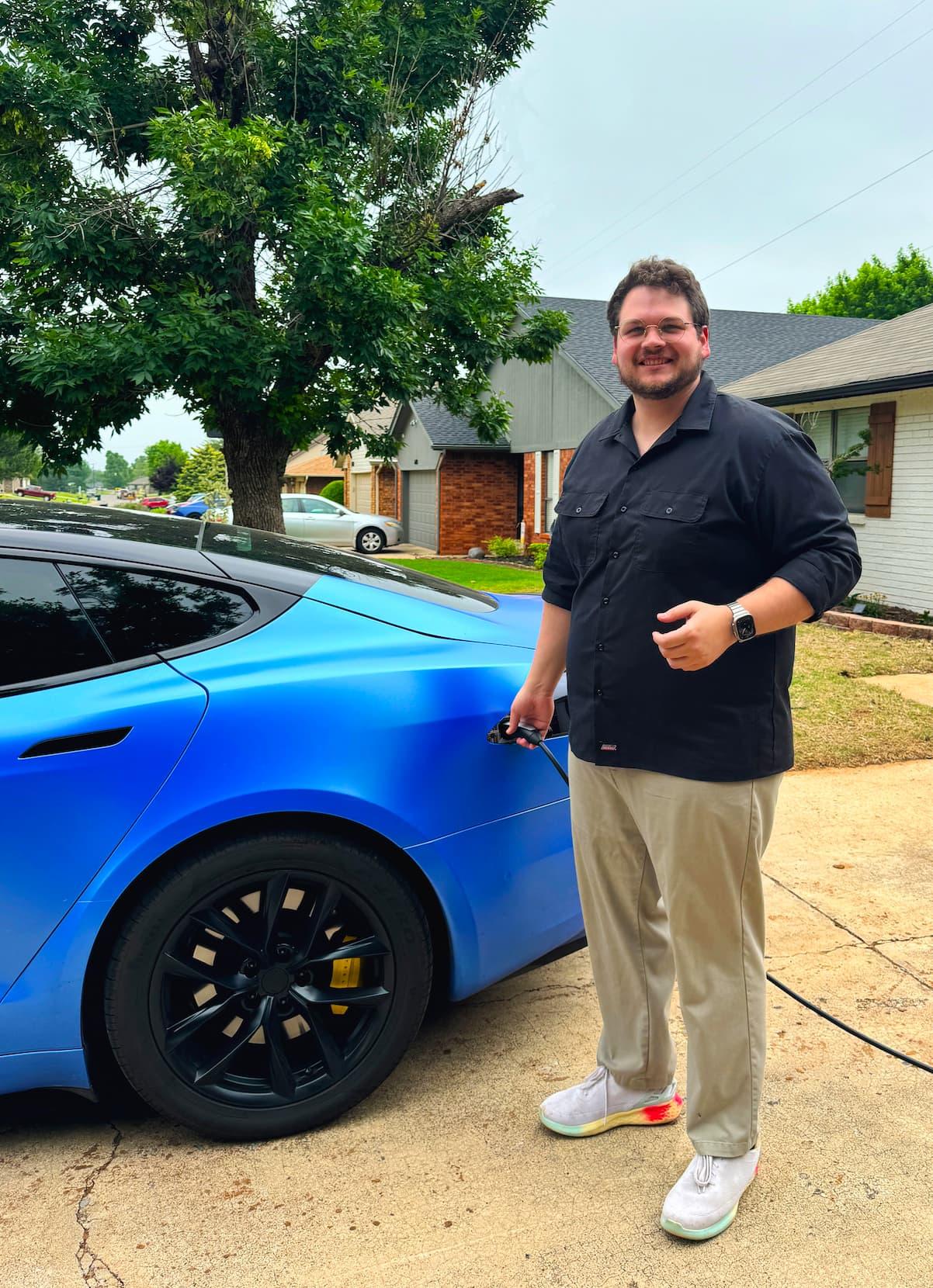
A lifelong car guy — “I love going to the drag strip” — last year Wyatt took advantage of the IRA's federal electric vehicle tax credit and purchased a Tesla, saving $7,500 off the sticker price. The car has proven to be the ride of his dreams. “EVs have changed my perception of what a high-performing vehicle could be,” he says.
Electric vehicle sales in the United States have ballooned since the Bipartisan Infrastructure Law passed, growing from 460,000 in 2021 to 1.2 million in 2023, an increase of more than 250%. Transportation is the largest source of climate pollution in the U.S. and powering an electric vehicle revolution is a cornerstone of the Biden-Harris administration's climate agenda.
Wyatt is so happy with his EV that last year he sold the gas-powered muscle car he’d been fantasizing about since he was 16. “I thought I would keep that car forever,” he says. "But I'm super passionate about EVs and what they're doing for the environment."
New jobs for coal country
In central Appalachia, with its historical focus on coal mining, the renewable energy industry has struggled to gain a foothold. Dan Conant of Shepherdstown, West Virginia, didn’t want his home state to miss out on opportunities for good jobs and cleaner air. “I wanted to make sure the renewable energy industry wasn’t ignoring this part of the country,” Conant says.
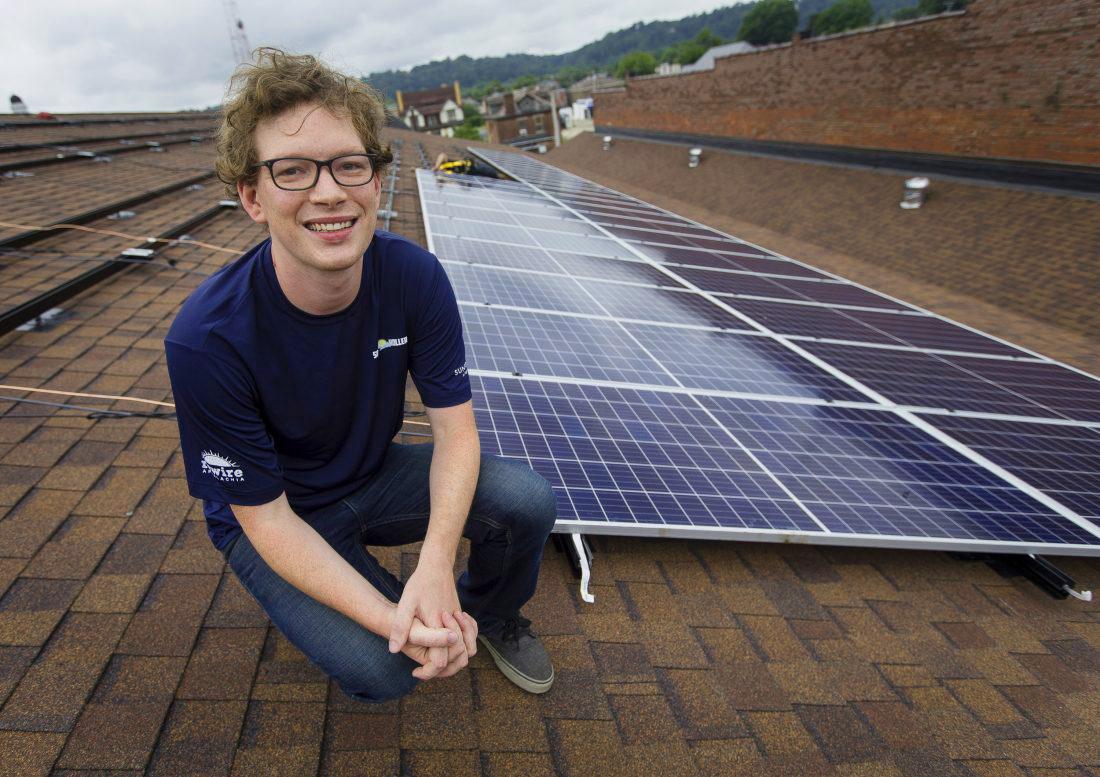
So in 2013, Conant founded Solar Holler. The company brings solar power to nonprofit institutions like libraries, churches and food banks, in addition to homes and businesses. What started as a one-man operation is today a public benefits corporation with more than 100 unionized staff.
Conant credits the Inflation Reduction Act with much of this growth. The legislation has driven a jump in demand in the region by providing direct payments of 30% of the total cost to municipalities, small businesses and nonprofits that install solar. In 2021, the year before the IRA passed, the state installed enough solar to power about 8,500 homes. In 2023, that number leapt by almost 40%.
Last year, aware of the growing need for more workers to serve a flourishing industry, Solar Holler started an internship program for students in their last year of high school. “We’ve had 15 interns come through that program and the majority have stayed with us after graduation," Conant says. "I’m pretty proud of what we’ve done.”
Low rents, solar power
University Neighborhood Housing Program, a nonprofit, affordable housing provider in New York City, was used to operating on tight margins. And then COVID hit. “Our costs skyrocketed,” says Brendan Mitchell, director of real estate and finance.
The nonprofit oversees 25 buildings offering 1,500 apartments to low-income residents in the Bronx. Thanks to the Inflation Reduction Act, solar power is easing the organization’s financial problems.
“We explored solar back in 2015,” Mitchell says. “But it was prohibitively expensive.”
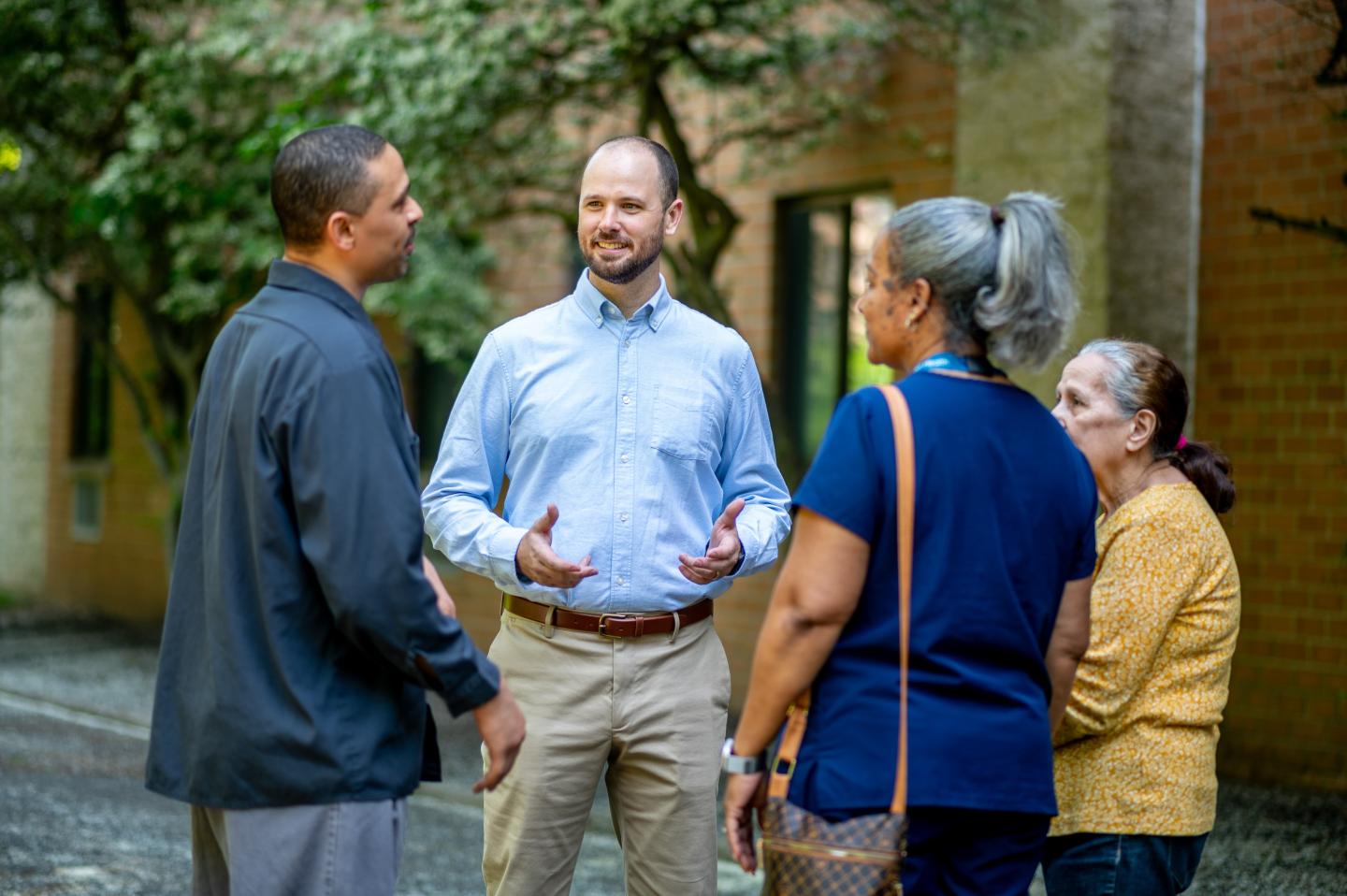
The IRA enables direct payments to nonprofit, affordable housing providers to underwrite the cost of solar installations. Solar power reduces a building's reliance on climate-damaging fossil fuels, and saves money on electricity.
UNHP has already installed seven solar arrays. In the buildings covered, Mitchell says, “for the most part, we don’t have electric bills.” UNHP is using the savings to keep rents down and maintain buildings.
Now, the organization is planning another IRA-assisted solar project, with battery backup, at a property that’s home to more than 100 seniors. “When the power goes out, the battery will allow us to run a cooling center and the elevators and have some lighting in the hallways,” Mitchell says. During a heatwave or other extreme weather event, that kind of system can save lives. “We’ve been talking about a project like this for years,” Mitchell says. “But with the IRA, it’s finally possible.”


